|

On eBay Now...
"University of Colorado" Robert L. Stearns Hand Hand Signed 5.5X3 Card For Sale

When you click on links to various merchants on this site and make a purchase, this can result in this site earning a commission. Affiliate programs and affiliations include, but are not limited to, the eBay Partner Network.

"University of Colorado" Robert L. Stearns Hand Hand Signed 5.5X3 Card:
$279.99
Up for sale "University of Colorado" Robert L. Stearns Hand Signed 5.5X3 Card.
ES-3244D
Robert Lawrence Stearns was born on October 3, 1892, in Halifax, Nova Scotia, Canada to John Lloyd and Ella Powell Stearns. He attended the University of Colorado, where he made the acquaintance of classics professor George Norlin, graduating with a Bachelor of Arts in 1914. He graduated from Columbia University Law School in 1916. Robert Stearns’ occupational history primarily involved law practice and teaching. He was an Assistant in the History Department at the University of Colorado in 1913 to 1914. Stearns was a part of the faculty of the University of Denver Law School from 1920 to 1931. In 1921 he was an instructor of history; he became professor of law in 1924. Stearns was involved with the Legal Firm of Lewis and Grant (Denver) in 1922 until he became a professor of law at the University of Colorado at Boulder in 1931, at which time George Norlin was already the University’s long term president. Professor Stearns soon replaced James Grafton Rogers as Dean of the Law School when Dean Rogers left the University of Colorado for a position at Yale University in 1935. In 1939, Dean Stearns became President of the University of Colorado, a position he held until 1953. Dean Stearns was named to the Faculty Senate Ethnic Minorities Committee, when history chair Carl Eckhardt and history professor Earl Swisher joined him to perform an investigation of the treatment of ethnic and racial minorities in 1938. It was Dean Stearns’ legal interpretation of state and federal civil rights law that made the committee recommend a wholesale change in the manner in which the University of Colorado dealt with social problems both on and off campus in February 1939, from a laissez faire approach to direct social engagement and commentary. After the appointment of Robert Stearns to the University’s Presidency, the Faculty Senate Ethnic Minorities Committee had a well informed and powerful ally and former member in the President’s Office. President Stearns’ efforts in minority civil rights continued throughout his presidency in the areas of minority student housing, on and off campus eating establishments, minority treatment by the CU Nursing School, the Boulder Sanitarium, the Boulder Valley School Board, Boulder’s cafes and restaurants, and University societies, honoraries, fraternities, and sororities. With the onset of World War II, President Stearns had to discover a method by which he could offset the departure of so many male students into the armed forces through enlistment and the draft. He managed to replace the missing men in student enrollment by coordinating with the US Navy to contract for Navy Training Schools at the Boulder Campus. About 1,800 to 2,000 men were recruited during World War II leaving the University of Colorado at Boulder with mostly female students remaining. By acquiring the US Navy Radio, Pre-Radar, Cooks, and Japanese/Oriental Language Schools, as well as the large V-12 Program, Stearns was able to maintain student enrollment as the Navy paid for housing, board, instruction, and equipment for all these Navy students. He successfully coordinated with Boulder’s civilian government and businesses to forestall any anti-Japanese backlash against the Japanese American instructors at the Navy Language School or the Japanese American students who arrived in four times their pre-war numbers at a time of heightened bias against that ethnicity during the war. Robert Stearns served in the US Army in both World War I and World War II. During the First World War, Stearns was commissioned as an officer and was discharged with the rank of captain in 1918. During World War II, President Stearns took time off from his presidency to work as Chief of Operations Analysis Sections, 13th and 20th Air Force, in 1943. He assisted in planning B-29 attacks on Japan. Furthermore, Stearns was appointed to the committee charged with proposing the targets for the atom bomb attacks in 1945. He was also appointed as a special consultant to the research and development board of the National Military Establishment, and the Navy Educational Advisory Council from 1942 to 1945. During the Korean War in 1950, he served as the chairman of an Air Force Study Committee to provide ground support with tactical aircraft deployment. After his return to campus in 1945, President Stearns dealt with many post war challenges. One of the first was an immediate expansion of student enrollment. Prior to the summer of 1945, student enrollment had peaked at roughly four thousand students. During the fall semester of 1945, more than eight thousand students arrived on campus. Stearns provided for these new students in a variety of methods. He had previously relocated much of the US Navy Japanese Language Program to Oklahoma A&M, freeing up dormitory space. He also pushed for several new student dormitories. Lastly, knowing that the bulk of these new students would be married veterans on the GI Bill, he directed the creation of “Vetsville”, an assemblage of Butler Buildings, Quonset huts, and trailers near Athens Court housing. Another issue was the changed academic climate after 1945. New faculties were substantially more research-oriented in their approach, requiring the President to support and endorse their new research agendas and the facilities those agendas would require. By 1953, the University had already begun its transformation from a teaching university to a research institution. After the war, President Stearns and his advisors became aware of a rising anti-communist tide in the Colorado public, press, and the state’s Republican Party. Knowing that the developing Cold War would taint progressives, liberals, and Democrats among the University’s faculty and administration, Stearns and his fellow administrators endeavored to protect the university’s anti-communist credentials, through statewide speaking engagements and restricting hires to those able to say they were not current members of the communist party. He did this while attempting to preserve academic freedom on campus, promoting controversial speakers and allowing Marxist and left wing student organizations to operate without interference. However, after 1947, national and international events curtailed his freedom of action. He had to send a committee to New York City to investigate the national American Youth for Democracy. His committee found that the New York City chapter of AYD contained the same membership as had the now illegal Young Communist League. Therefore, the CUAYD lost its campus affiliation. In addition, other socialist and Marxist student groups were put under scrutiny. Paul Robeson who had stayed at the President’s house during his visit in 1943 was again invited to stay during his 1947 visit, when AYD asked him to speak at one of their meetings. In 1951, Congressional anti-communist investigations caught up with CU Professor David Hawkins, who warned that the time had come for the Board of Regents to take decisive actions, or federal and state agencies would perform draconian investigations of CU faculty and students. The Board of Regents, acting on President Stearns’ suggestion, decided to run their own investigation rather than risk losing control of the process. They hired ex-FBI agents, Dudley Hutchinson and Harold Hafer, to perform investigations of faculty members and then conducted interviews, prior to deciding on retention or non-retention. As the investigation progressed, only two non-tenured-instructors were released. The entirety of the tenured faculty was retained. It is important to note that the 1940 AAUP proposal for academic freedom and the measures they suggested were not accepted by the Board of Regents until 1966. Prior to that date, tenure did not afford meaningful protection against firing for “the good of the university”. It should also be noted that another anti-communist probe of CU was proposed by a Colorado Republican in 1953. However, so successful had Stearns’ Board of Regents investigation been that in 1953 the state and federal Colorado Republicans failed to join the new effort and Colorado faculty now knew how to respond to the investigator, and nothing came of the new probe. Despite requests by the FBI, the Colorado Governor and the State Legislature, Stearns and the Board of Regents refused to release the Hutchinson-Hafer Report. Files from these anti-communist investigations and all records relating to accusations, denunciation and charges of communism, as well as all mitigating and exculpatory evidence were placed in a bank security deposit box, closed for more than 50 years. Robert Stearns retired from the presidency in 1953. Soon after, the Alumni Association created a new award, named after the emeritus president, to honor faculty and staff members for their service and achievements. The Stearns Award was later given to David Hawkins and Joseph Cohen, prominent subjects of the 1951 anti-communist investigation. Both faculty members accepted the award, grateful for President Stearns’ efforts on their behalf.


Starbucks Been There Series Campus Collection University of Washinton Mug $19.99

Starbucks Been There Series Mug University of Notre Dame Fighting Irish Limited $22.49
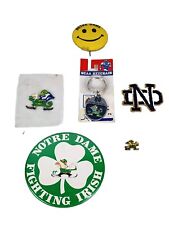
Vintage University of Notre Dame Bundle Lot Irish Pins Lapel Key Chain Patches $16.99
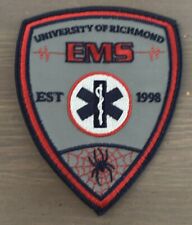
University Of Richmond EMS Patch $7.00
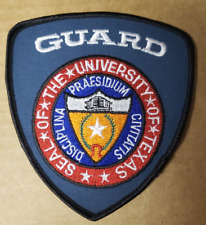
TX University of Texas Guard Police Shoulder Patch $5.25
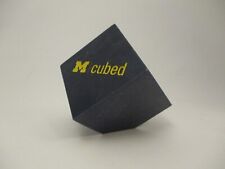
University of Michigan Cubed 2" Cube Paperweight Blue Marbled U of M $24.99
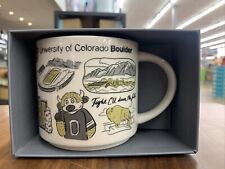
University Of Colorado Starbucks Coffee Mug Boulder Been There Campus Collection $28.99
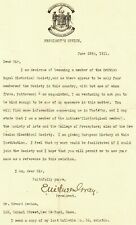
"University of New Mexico" Edward Dundas McQueen Gray Signed TLS Dated 1911 COA $349.99
|